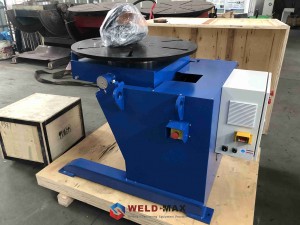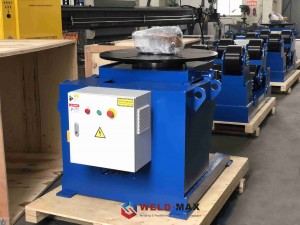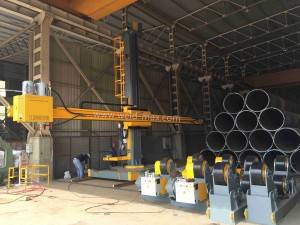Pipe Elbow Flange Welding Positioner Tilting Equioment
Pipe Elbow Flange Welding Positioner Tilting Equioment
Welding positioners are rotating devices that allow a welder to work in one position and maintain a level surface. This helps the welder who must work on oddly shaped parts, such as tubular pipelines. The lack of worker movement that is required to complete a job makes welding positioners reduce worker fatigue as well as increase productivity. Due to the lack of overhead and vertical runs, this method produces consistently high-quality welds.
How Does The Welding Positioner Work?
With welding positioners, the welder is able to continuously weld a joint in a flat position, without interrupting the process, by grasping the pipe joint or valve and rotating the workpiece, as necessary. Instead of moving the torch or electrode holder, the welder can keep the weld puddle in place.
By allowing better access to the welding seam on the pipeline, welding positioners increase welding deposition rates and reduce rejection rates on pipelines. Using a welding gripper or welding positioner enables the operator to weld faster than would be possible with a manual or semi-automatic setup.
How to use welding positioner correctly?
Safety is the first priority when using a welding positioner. You need to secure your welding positioner to a flat, stable surface at all times. As well as welding positioners, benchtops should be secured.
Ensure that your welding positioner is in compliance with the manufacturer’s specifications. A welding positioner’s motor and control depend on the required speed and size for the operation it’s supposed to perform, and the specifications of the manufacturer will inform you if the machine will be able to handle the task.
During welding, the positioner should be connected to a ground current as well. A damaged electrical part can be caused without it. In addition to compatibility with the electric current produced by the welding process, the positioner must also be compatible with the welding process.
Tube and pipe assemblies can be assisted by benchtop welding positioners. There is a proven method for tackling circular piece welding challenges with tabletop welding positioners. Workpiece rotation can be accomplished using benchtop welding positioners, which allows welders to continue welding without having to move awkwardly around the work bench.
Features and advantages of head-tail stock positioner
Various parts and welding applications can be handled by head-tail stocks positioners. In general, a head-tail stock welding positioner is used to support long rectangular shapes from both ends. For ergonomic placement of the welding part, fixed height rotation machines, centerline machines, and power elevating machines are available. Head-tail stock positioners can also lift and rotate heavy workpieces such as trailer frames or large vessels with maximum flexibility.











